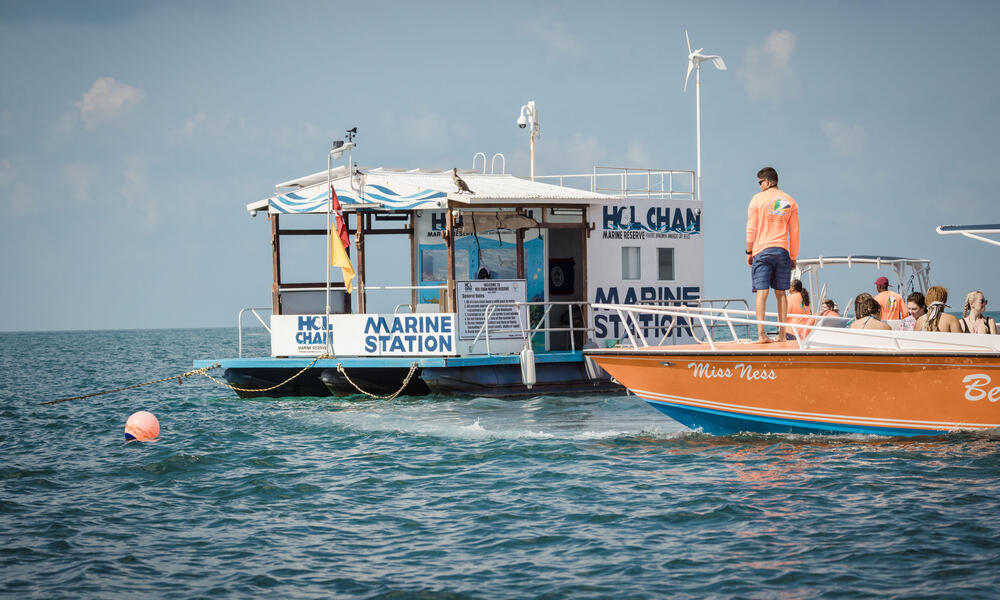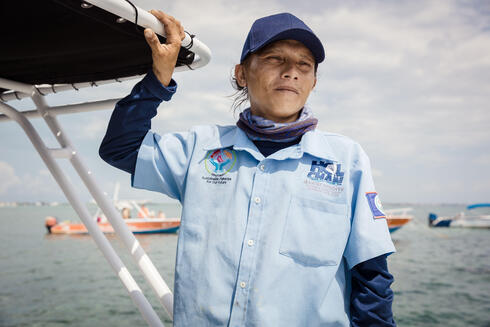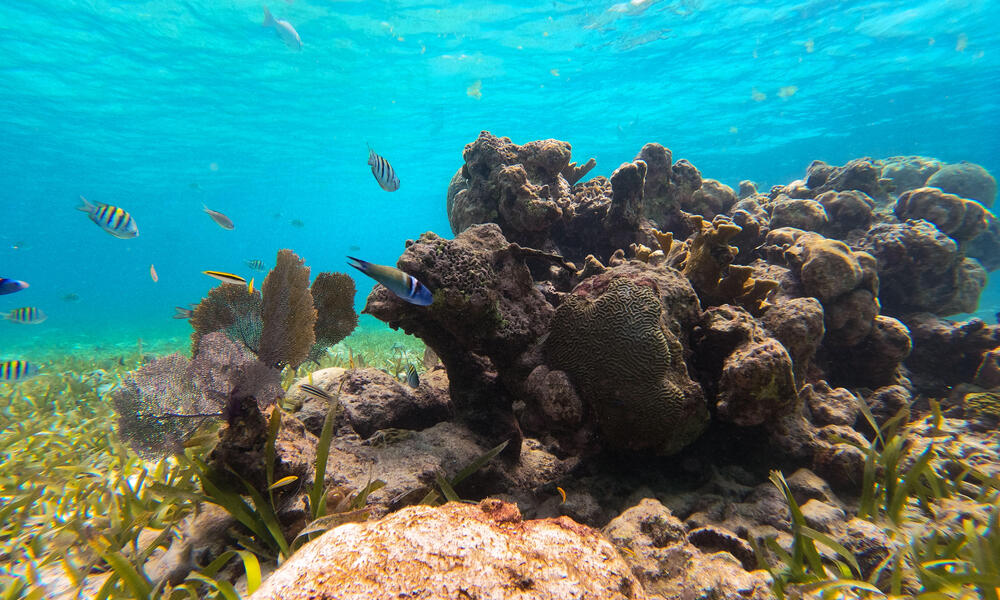And successful protection of such a precious natural resource is only achieved with the help of all interested parties, from government to community to business. Hol Chan Marine Reserve staff members conduct community outreach to connect people to the reef, working with everyone from primary school students to owners and employees of local businesses. Conservation organizations such as WWF, the MarAlliance, and others, that help conduct research and provide critical information that supports effective management of our oceans also play an important role in protecting wildlife and their habitats.
The visibility of the reef from the shoreline—one can watch the waves break against it while standing on the beach—and its proximity to Ambergris Caye, a long, skinny island off the eastern shore of Belize, contribute to a prevailing desire to protect it. And generations of families have fed their loved ones by fishing the reef.
“You are seeing tourists excited to go and visit the reef, to snorkel and dive the reef. You are seeing fishers come in with daily catch from the reef,” Bood said. “The reef is close to the community’s heart.”
Back at the ranger station, Munoz watches as boats full of eager tourists putter into the reef for a morning of snorkeling and diving. Sounds of exhilaration ripple through the air. He is proud of his position and what it means for visitors, locals, and Belize.
“It shows them that I'm doing something positive,” he says. “Not just for myself, not for just the community, but also for the future.”


